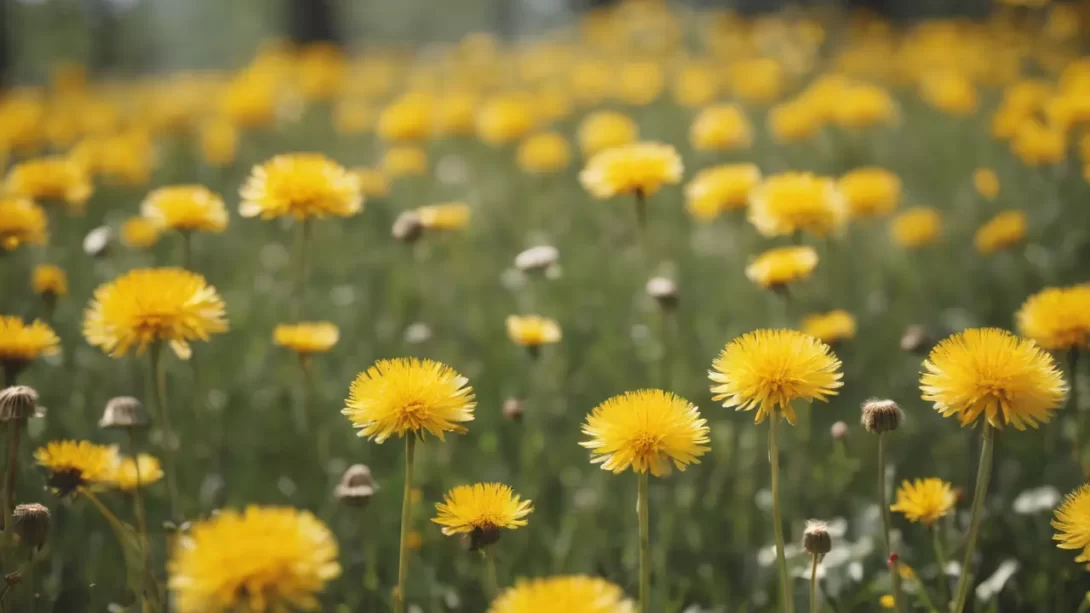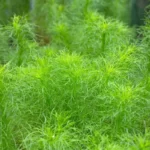Dandelions, often regarded as a stubborn weed in gardens, hold a fascinating aspect of plant behavior. Known for their bright yellow flowers and fluffy seed heads, they are more than just an unwelcome guest in lawns and gardens. One intriguing question about these ubiquitous plants is whether they close at night. This article explores the behavior of dandelions in response to light and dark, shedding light on the daily rhythms of this common plant.
Dandelions
Dandelions (Taraxacum officinale) are perennial plants, easily recognized by their rosette of leaves and bright yellow flowers. They are often found in a variety of habitats, from lawns to meadows, and are known for their hardiness and ability to thrive in challenging conditions. Apart from being a common lawn weed, dandelions have culinary and medicinal uses and play a significant role in the ecosystem, particularly as a source of nectar and pollen for insects. Understanding their growth cycle and behavior is key to appreciating their role in the environment.
The Phenomenon of Nyctinasty in Plants
Nyctinasty is a term used to describe the movement of plants in response to the onset of darkness. This phenomenon is observed in several plant species and involves the closing of flowers or leaves at night and reopening them during the day. This movement can be a protective mechanism, a response to changes in light, temperature, or humidity. Dandelions exhibit this interesting behavior, which has been a subject of curiosity and study among botanists and nature enthusiasts.
Dandelions’ Response to Light and Darkness
Dandelions exhibit a clear response to changes in light conditions, a behavior that is particularly noticeable with their flowers. As night approaches and sunlight fades, dandelion flowers close up, often referred to as “going to sleep.” This closing at dusk continues throughout the night, and as dawn breaks with the first light, the flowers open up again. This daily cycle is consistent and is largely influenced by the light levels in the plant’s environment. Temperature fluctuations between day and night can also play a role in this process, making it a complex interaction of environmental factors.
The Role of Light and Temperature in Influencing Dandelion Behavior
The closing and opening of dandelion flowers are not just random movements but are driven by changes in light intensity and temperature. Light acts as a signal for dandelions to open their petals and expose their reproductive parts for pollination during the day. Conversely, the reduced light at night signals the flower to close, protecting its delicate parts from nighttime moisture and potential cold temperatures. This adaptation is crucial for their survival, ensuring that the reproductive processes occur when pollinators like bees are active and conditions are favorable.
The Benefits of Closing at Night for Dandelions
The nyctinastic behavior of dandelions closing at night offers several evolutionary advantages. By closing their flowers during the night, dandelions protect their pollen from dew and potential fungal infections that can be more prevalent in cooler, moist nighttime conditions. This mechanism also helps in maintaining the temperature of the reproductive organs, which can be crucial in early spring when night temperatures can drop significantly. Additionally, closing at night reduces the risk of damage from nocturnal animals and conserves energy for the next day’s pollination activities. This behavior underscores the dandelion’s ability to adapt to its environment, contributing to its widespread success as a species.
Observing Dandelion Behavior in Your Own Garden
For gardeners and nature enthusiasts, observing the nyctinastic behavior of dandelions can be a fascinating activity. To witness this, one can simply observe a dandelion flower during the late afternoon as the sun begins to set and then again in the early morning. This will provide a clear view of the flower’s response to the changing light conditions. It’s also interesting to note the differences in timing during various seasons and under different weather conditions. Creating a journal to document these observations can be both educational and enjoyable, offering deeper insights into the daily rhythms of this common yet intriguing plant.
Best Practices for Creating Conditions to Witness This Phenomenon
To ensure that dandelions in your garden exhibit this natural behavior, it’s important to maintain a natural environment. Avoiding excessive lawn mowing and the use of herbicides will allow dandelions to grow and flower. Providing a habitat that mimics their natural conditions, with ample sunlight and space, will encourage healthy growth and the regular opening and closing of flowers. Also, observing dandelions in different areas of your garden can reveal how variations in microclimates affect their behavior.
Conclusion
The daily closing and opening of dandelion flowers is a remarkable example of how even the most common plants have adapted sophisticated behaviors to thrive in their environment. This nyctinastic movement, driven by changes in light and temperature, not only serves practical functions for the dandelion’s survival but also adds to the dynamic beauty of our natural world. Understanding and appreciating these aspects of dandelions can enhance our gardening experiences and our respect for the complexities of plant life. So, the next time you spot a dandelion, take a moment to observe its daily dance with light and darkness, and appreciate the intricate simplicity of nature at work.



